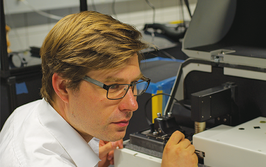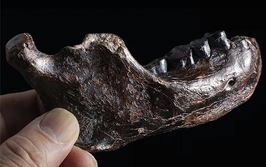Weather-Induced Degradation Study of Polystyrene Using the Photoprobe
High Intensity UV Irradiator at 800 mW/mm2

contributed by CDS |
Environmental conditions play a critical role in polymer lifetime, and traditional degradation studies take time ranging from hours to days due to limited light intensity. CDS’s Photoprobe uses freespace focusing technology and improves the light intensity to 800 mW/mm2 from 260 nm to 400 nm wavelength, which reduces the time on weather-induced degradation studies down to minutes.
A CDS 6200 Pyroprobe equipped with Drop-In-Sample Chamber (DISC) and Photoprobe was used, and an autosampler module was installed to automate the weathering-pyrolysis sequence. 11 μg of polystyrene was irradiated in the DISC with the presence of air as reactant gas at a flow rate of 10 ml/min. The volatiles generated from the photoreaction were trapped on the analytical trap, and then desorbed to the GC-MS after the photoreaction is completed. The remaining polymer was pyrolyzed at 600°C as the last step. A DISC quartz tube was used as the sample vessel.
Log in or register to read this article in full and gain access to The Analytical Scientist’s entire content archive. It’s FREE!

















